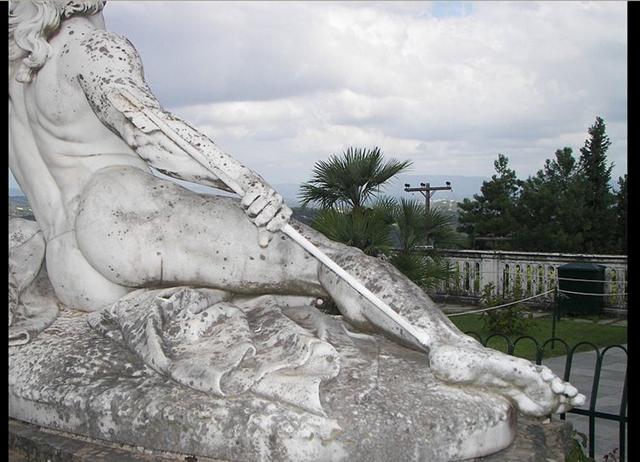|
RIGEL
Once again. We must always look closely, pay attention to what really was said. From the figure in Ca4-20 (→ 7 * 60) to the development of the same figure in Ca5-5 (*110) - at the time when ideally the Archer (Alrami, α Sagittarii) should be seen close to the right ascension line of the Full Moon, there were was a fortnight:
Alrami (*293.2) was located on the left front leg of the horse (or rather the left leg of the man in front) above the equally bright β (Arkab Prior, *293.0). Although Hevelius has illustrated Arkab as brighter than Alrami, presumably because its fraction .0 could be used for measurements. ... only 5 of the 12 constellations in the zodiac are visited by Venus (Taurus, Sagittarius, Cancer, Aquarius, Virgo) ... ... As the earth makes its annual revolution of the Sun the observer sees new constellations rising in the east after sundown from week to week, while others disappear in the west and are lost in the rays of the Sun. In the northern hemisphere we are accustomed to associate Canis Major and Orion with winter and Scorpius and Sagittarius with summer because these groups of stars dominate the evening sky in their respective seasons. The Polynesians, on the other hand, made their observations in the early morning twilight. To the Maori Sirius in Canis Major was therefore a star of July and a harbinger of frost and cold weather in their southern latitude, so that the name Takurua became synonymous with winter. Antares in Scorpius was first seen by New Zealanders before dawn in November - December and was considered the herald of summer heat, the star which ripened fruit and enervated man. The morning star was said to rule the month during which it rose before sunrise ... ... According to Maya Cosmos their scorpion constellation equals our Scorpio and the snake at the other side of the great tree corresponds to our Sagittarius ... Arkab is that tendon which carries the name of the fallen Achilles. ... And long did they consider further. At the end of a time no man can measure the five decided that Rangi and Papa must be forced apart, and they began by turns to attempt this deed. First Rongo ma Tane, god and father of the cultivated food of men, rose up and strove to force the heavens from the earth. When Rongo had failed, next Tangaroa, god and father of all things that live in the sea, rose up. He struggled mightily, but had no luck. And next Haumia tiketike, god and father of uncultivated food, rose up and tried without success. So then Tu matauenga, god of war, leapt up. Tu hacked at the sinews that bound the Earth and Sky, and made them bleed, and this gave rise to ochre, or red clay, the sacred colour. Yet even Tu, the fiercest of the sons, could not with all his strength sever Rangi from Papa. So then it became the turn of Tane mahuta. Slowly, slowly as the kauri tree did Tane rise between the Earth and Sky. At first he strove with his arms to move them, but with no success. Then he placed his shoulders against the Earth his mother, and his feet against the Sky. Soon, and yet not soon, for the time was vast, the Sky and Earth began to yield. The sinews [uaua] that bound them stretched and ripped. With heavy groans and shrieks of pain, the parents of the sons cried out and asked them why they did this crime, why did they wish to slay their parents' love? Great Tane thrust with all his strength, which was the strength of growth. Far beneath him he pressed the Earth. Far above he thrust the Sky, and held them there ... Kaus Borealis was λ (†), the bright star on the serpentine bow, close to the left hand and above the arrow of the Archer Man/Horse. And south of the bow was the even brighter Kaus Australis, ε (*). ... Five naked giants, who had swum across the river, came in turn to avenge their grandmother. Each one had a different kind of game on his shoulder (in the following order: deer, brown bear, cougar, grizzly and human ...). By resorting to a ruse, the brothers got the better of the first four of their opponents. While Cougar, who had defied them, was struggling with them, Wildcat cut their Achilles tendons. The last giant, however, who had not bothered to undress when crossing the river, was tougher. While wrestling, Cougar and he gradually rose up into the air and cut each other to shreds. Scraps of flesh fell to the ground, and Wildcat kept or discarded them, according to whether they were white or black, only the white pieces came from his brother, whom he would have to reconstitute at the end of the fight. However, he gave him the wrong liver (or viscera ...). Cougar thought he would die. 'Oh, no,' Wildcat explained, 'it is better this way, for henceforth you will be a dangerous human being.' ...
|
||||||||||||||||||||||||||||||||||||||||||||||||||||||||||



